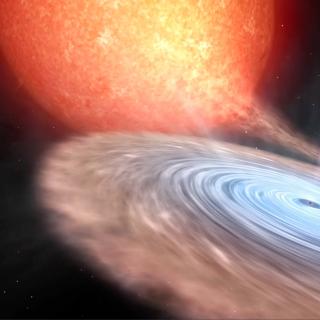Bibcode
Armas Padilla, Montserrat; Rodríguez-Gil, Pablo; Muñoz-Darias, Teo; Torres, Manuel A. P.; Casares, Jorge; Degenaar, Nathalie; Dhillon, Vik S.; Heinke, Craig O.; Littlefair, Stuart P.; Marsh, Thomas R.
Referencia bibliográfica
The Astrophysical Journal
Fecha de publicación:
5
2022
Revista
Número de citas
2
Número de citas referidas
2
Descripción
We present a detailed time-resolved photometric study of the ultracompact X-ray binary candidate 4U 1812-12. The multicolor light curves obtained with HiPERCAM on the 10.4 m Gran Telescopio Canarias show a ≃114 minute modulation similar to a superhump. Under this interpretation, this period should lie very close to the orbital period of the system. Contrary to what its other observational properties suggest (namely, persistent dim luminosity, low optical-to-X-ray flux ratio, and lack of hydrogen features in the optical spectrum), this implies that 4U 1812-12 is most likely not an ultracompact X-ray binary, which is usually defined as a system with an orbital period lower than 80 minutes. We discuss the nature of the system, showing that a scenario in which 4U 1812-12 is the progenitor of an ultracompact X-ray binary may reconcile all the observables.
Proyectos relacionados

Agujeros negros, estrellas de neutrones, enanas blancas y su entorno local
Los agujeros negros y estrellas de neutrones en binarias de rayos-X son laboratorios únicos para explorar la física de estos objetos compactos. No solo permiten confirmar la existencia de agujeros negros de origen estelar a través de mediciones dinámicas de sus masas, sino que también permiten investigar el comportamiento de la materia y la
Montserrat
Armas Padilla